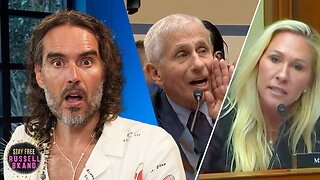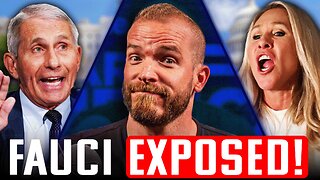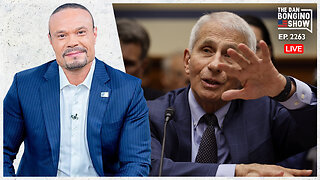Amazing Prophet Kim Clement 2010, Nashville TN
The Problems Associated With Ebola Vaccine by Professional Vaccine Hazard Researcher Thomas W. Trefts
Founder of Veterans Against Treason
Veterans Health Chairman of The National Vietnam And Gulf War Veterans Coalition
Paid Researcher ( one month , part time ) for Robert F. Kennedy’s Children’s Health Defense
Long Time Activist Against Allen Experimental Vaccines 💉Given Without Informed Consent.
Note 📝 : Vaccines 💉 Given Without Informed Consent are by their very nature defined as a War Crime Offense.
From September 15, 2023
Ebola Vaccine: Information about ERVEBO®
On This Page
• Why an Ebola Vaccine is Important
• The Ebola Virus Vaccine
• Ebola Vaccine Eligibility
• Booster Dose Eligibility
Why an Ebola Vaccine is Important
A safe and effective vaccine is an important tool to protect frontline workers and prevent the introduction and spread of Ebola disease in the United States.
Ebolaviruses are zoonotic pathogens that cause severe hemorrhagic fever in humans, known as Ebola disease. There are four species of Ebolaviruses that are known to cause disease in humans.
Of these, Ebola virus (EBOV; species Zaire ebolavirus), the cause of Ebola virus disease (EVD), is the most lethal, with case fatality rates of 70–90% if left untreated. EBOV is responsible for the majority of recorded Ebola disease outbreaks. This includes the two largest Ebola disease outbreaks in history, the 2014–2016 West Africa outbreak and the 2018 outbreak in eastern Democratic Republic of the Congo, where over 32,000 people were infected, and more than 13,600 deaths were reported.
Importation of Ebola disease to the United States by an infected traveler from an outbreak area is a recognized risk with the potential for spread to other people. During the 2014–2016 Ebola disease outbreak in West Africa, 11 people were treated for EVD in the U.S., and two of them died. Nine of these cases were imported into the U.S. Two were domestic healthcare workers who were infected while caring for the first travel-associated Ebola disease case diagnosed in the U.S. Both healthcare workers recovered.
The Ebola Virus Vaccine
ERVEBO® (Ebola Zaire Vaccine, Live also known as V920, rVSVΔG-ZEBOV-GP or rVSV-ZEBOV) is approved by the U.S. Food and Drug Administration (FDA) for the prevention of disease caused by Ebola virus (EBOV; species Zaire ebolavirus) in individuals 12 months of age and older as a single dose administration. ERVEBO is a replication-competent, live, attenuated recombinant vesicular stomatitis virus (rVSV) vaccine manufactured by Merck. It is not possible to become infected with EBOV from the vaccine because the vaccine only contains a gene from the Ebola virus, not the whole virus.
Specifically, it contains a gene for the EBOV glycoprotein that replaces the gene for the native VSV glycoprotein. ERVEBO does not provide protection against other species of Ebolavirus or Marburgvirus.
Antibody measurements are often used as a surrogate test to predict when protection by a vaccine can be expected. Clinical trials have shown that the vaccine elicits rapid antibody response in 14 days after a single dose. Clinical efficacy of the vaccine was supported by a randomized cluster (ring) vaccination study during the 2014–2016 outbreak in Guinea. In this study, 3,775 people in close contact with diagnosed EVD cases (contacts) and their close contacts (contacts of contacts) received immediate vaccination.
No one who was vaccinated immediately developed EVD 10 or more days after vaccination.
The correlate of protection, or the specific immune response to the ERVEBO vaccine that closely relates to protection against infection with EBOV, is unknown and still being studied. It is also not known whether it is effective when administered concurrently with antiviral medication, immune globulin, and/or blood or plasma transfusion. The duration of protection conferred by an initial dose of ERVEBO is also unknown. A booster dose for people who have been previously vaccinated may extend the duration of protection for ERVEBO. Scientists continue to monitor people who have received the vaccine to learn more.
Ebola Vaccine Eligibility
ERVEBO is not currently commercially marketed in the U.S. but is currently stockpiled in the Strategic National Stockpile and is made available through CDC for pre-exposure vaccination of individuals who fall into one of the three occupational categories:
1. Ebola virus disease (EVD) responders to an Ebola virus (EBOV; species Zaire ebolavirus) outbreak.
2. Laboratorians and support staff working at biosafety level 4 (BSL-4) or Laboratory Response Network facilities in the United States that handle specimens that contain or might contain replication-competent EBOV.
3. Healthcare personnel (HCP)* at federally designated Ebola Treatment Centers or state-designated Special Pathogens Treatment Centers** involved in the care and transport of patients infected or suspected to be infected with EBOV.
Disclaimer: The mention of any product names or non-United States Government entities on CDC Ebola websites is not meant to serve as an official endorsement of any such product or entity by the CDC, the Department of Health and Human Service, or the United States Government.
Booster Dose Eligibility
Given booster dose vaccination is not covered under ERVEBO’s FDA-approved indication, the Centers for Disease Control and Prevention (CDC) is sponsoring an expanded access Investigational New Drug (IND) program
[PDF – 600 KB] to allow booster dose administration for pre-exposure prophylaxis in adults (≥ 18 years of age) who were previously vaccinated (e.g., ≥ 6 months since prior vaccination) and who have potential risk of occupational exposure to EBOV. Final eligibility decisions of booster doses will be assessed on an individual basis.
Resources
• ERVEBO® package insert
• ERVEBO® patient information
[PDF – 58 KB]
• Choi MJ, Cossaboom CM, Whitesell AN, et al. Use of Ebola Vaccine: Recommendations of the Advisory Committee on Immunization Practices, United States, 2020. MMWR Recomm Rep 2021;70(No. RR-1):1–12. DOI: http://dx.doi.org/10.15585/mmwr.rr7001a1external icon
.
• Malenfant JH, Joyce A, Choi MJ, et al. Use of Ebola Vaccine: Expansion of Recommendations of the Advisory Committee on Immunization Practices to Include Two Additional Populations—United States, 2021. MMWR Morb Mortal Wkly Rep 2022;71:290–292. DOI: http://dx.doi.org/10.15585/mmwr.mm7108a2
Footnotes
*Healthcare personnel (HCP) refers to all paid and unpaid persons serving in healthcare settings who have the potential for direct or indirect exposure to EVD patients or infectious materials, including body substances (e.g., blood, tissue, and specific body fluids); contaminated medical supplies, devices, and equipment; contaminated environmental surfaces; or contaminated air. These healthcare personnel include, but are not limited to, emergency medical service personnel, nurses, nursing assistants, physicians, physician assistants, technicians, clinical laboratory personnel, autopsy personnel, therapists, phlebotomists, pharmacists, students and trainees, contractual staff not employed by the healthcare facility, and persons not directly involved in patient care, but who could be exposed to infectious agents that can be transmitted in the healthcare setting (e.g., clerical, dietary, environmental services, laundry, security, engineering and facilities management, administrative, billing, and volunteer personnel).
Adapted from https://www.cdc.gov/infectioncontrol/guidelines/healthcare-personnel/index.html
**
Healthcare facilities that intend to receive and are able to provide care for a suspected or confirmed patient with Ebola disease for the duration of their illness, as assessed by their state health department. In addition to Ebola disease, these facilities may also be designated by the states to treat other high consequence pathogens.
Last Reviewed: September 15, 2023
EBOLA 🦠 DISEASE 🦠 TRANSMISSION
https://www.cdc.gov/vhf/ebola/transmission/index.html
Let’s go over this one more time :
Tested for ten days in New Guinea ( pigs ? ) New 🆕 Guinea 🇬🇳 Pigs 🐷?
Dark Humor ?
What are the exact names of the participants. How long did they live after the 10 day mark ?
Random Ring ? Are you shitting me ? Where are the statistics ? Who was ruled in / who was ruled out ?
**** See Below ****
Why an Ebola Vaccine is Important
A safe and effective vaccine is an important tool to protect frontline workers and prevent the introduction and spread of Ebola disease in the United States.
Ebolaviruses are zoonotic pathogens that cause severe hemorrhagic fever in humans, known as Ebola disease. There are four species of Ebolaviruses that are known to cause disease in humans. Of these, Ebola virus (EBOV; species Zaire ebolavirus), the cause of Ebola virus disease (EVD), is the most lethal, with case fatality rates of 70–90% if left untreated. EBOV is responsible for the majority of recorded Ebola disease outbreaks. This includes the two largest Ebola disease outbreaks in history, the 2014–2016 West Africa outbreak and the 2018 outbreak in eastern Democratic Republic of the Congo, where over 32,000 people were infected, and more than 13,600 deaths were reported.
Importation of Ebola disease to the United States by an infected traveler from an outbreak area is a recognized risk with the potential for spread to other people. During the 2014–2016 Ebola disease outbreak in West Africa, 11 people were treated for EVD in the U.S., and two of them died. Nine of these cases were imported into the U.S. Two were domestic healthcare workers who were infected while caring for the first travel-associated Ebola disease case diagnosed in the U.S. Both healthcare workers recovered.
——
-
 1:00:53
1:00:53
In The Litter Box w/ Jewels & Catturd
20 hours agoDr. Evil Testifies | In the Litter Box w/ Jewels & Catturd - Ep. 579 - 6/4/2024
32.4K34 -
 34:36
34:36
Tactical Advisor
2 hours agoNew Handgun Release - Springfield Hellcat Comp- Vault Room Live Stream
12.3K5 -
 2:15:38
2:15:38
Due Dissidence
9 hours agoMacklemore's Germany Concert, Mexico Elects LEFTIST WOMAN President, Biden OK's Ukraine Escalation
28K15 -
 2:02:05
2:02:05
Barstool Yak
6 hours agoThe Yak with Big Cat & Co. Presented by Rhoback | The Yak 6-4-24
25.1K1 -
 52:00
52:00
Ben Shapiro
4 hours agoEp. 1978 - The Hunter Biden Trial BEGINS
59K55 -
 1:08:14
1:08:14
Russell Brand
6 hours agoFauci To JAIL? DESTROYED By MTG + Trump’s MEGA Fundraising Haul! - Stay Free 378
180K641 -
 1:36:01
1:36:01
Graham Allen
6 hours agoFauci EXPOSED for Lying About EVERYTHING + Caitlin Clark facing racism??
66.3K176 -
 1:52:07
1:52:07
TheAlecLaceShow
6 hours agoGuest: Michael Franzese | Fauci Testifies | Hunter Trial Begins | Pride Month | The Alec Lace Show
40.4K9 -
 58:59
58:59
The Dan Bongino Show
8 hours agoHas Accountability Finally Come For Dr. Fauci? (Ep. 2263) - 06/04/2024
564K1.95K -
 1:31:17
1:31:17
Steven Crowder
7 hours agoDictator Dic-Off Sadistic 16: The Most Out of Pocket Bracket You've EVER Seen
180K534